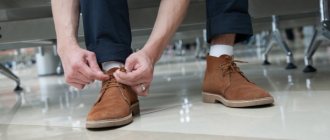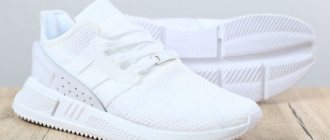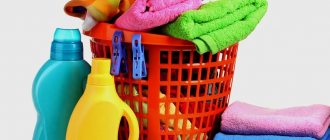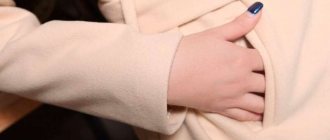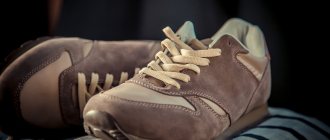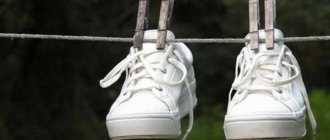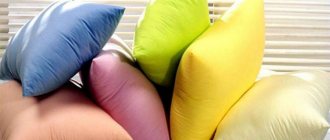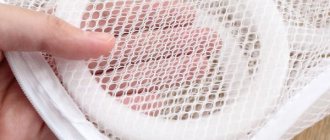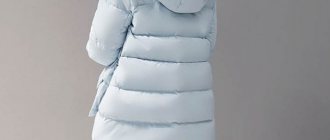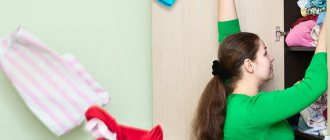Which sneakers can be washed?
Automatic or hand washing with regular clothing products is only permissible for fabric or synthetic sneakers.
Automatic washing is not acceptable for shoes decorated with rhinestones, rivets or appliqués. Cleaning leather sneakers should be done in the same way as other leather shoes: wipe with a damp cloth, clean with a cream of the appropriate color. Washing in cold running water is acceptable.
It is recommended to clean suede sneakers only when dry, using special products for suede and nubuck.
Exact washing instructions can be found on the inside label of the sneaker or in the box.
How to get rid of odor without a washing machine
You don't have to wash your sneakers every time to remove sweat odor. Now stores offer a huge number of products for cleaning the inside of shoes: Scholl Fresh Step, Salamander Shoe Deo, Cliven, Dividic. They not only neutralize bad aroma, but also prevent the growth of fungus.
Folk recipes include products such as vinegar, soda, activated carbon, ammonia, green tea, citrus peels and bay leaves. Pour soda directly into shoes or into small bags and leave for 12 hours. Leather products are wiped with alcohol and vinegar, but solutions are not entirely suitable for fabric. After treatment, you need to leave the sneakers in the fresh air for several hours. Green tea and orange or lemon skins will get rid of bacteria: they are placed inside and left overnight.
How to prepare sneakers for washing?
Everything that can be removed must be removed in advance: laces, insoles, inlays, overlays. In the washing machine, laces risk falling out or getting clogged in the holes of the drum, and the insoles can become deformed. And they stretch separately much better.
Insoles, especially orthopedic ones, should be washed separately - by hand. It’s even better if you perform this procedure under running water with a brush, after soaking the insoles in cold water for 10-15 minutes.
The laces can be machine washed, but only in a tightly wrapped bag.
Washing shoes
Washing involves exposure to water, detergents, and mechanical friction. Shoes for which this is contraindicated cannot be washed. Sneakers are made from a wide variety of materials, and the manufacturer does not always care about the quality of the product. Therefore, it is worth carefully considering all the nuances before washing or soaking. You can often stumble upon surprises. For example, in the sole under a thin elastic insole (great to the touch and to wear) there may be thick pressed cardboard - options for soaking and machine washing of such sneakers are immediately eliminated. Magnificent rhinestones instantly fly off, as soon as you walk over them with a brush or spin your shoes in the car. The color fastness of fabric often also leaves much to be desired.
We recommend reading: Methods for removing pen ink from clothes
There are two ways to wash sneakers:
- manually;
- in the washing machine.
How to wash sneakers?
Sneakers are made with a large number of synthetic materials of various properties. Many of them cannot tolerate high temperatures - shoes can fade or become deformed.
However, textile sneakers can withstand both manual and automatic washing. Almost all modern washing machines have a shoe washing mode. If it is not available, the mode for washing sportswear or delicate synthetics is suitable.
It is not recommended to just throw sneakers into the drum - it has a bad effect on the mechanics of the washing machine. It is best to use special bags for washing shoes.
If you don't have one on hand, use an old pillowcase or any other piece of material, tying it so that the sneakers don't fly out.
It is recommended to wash 2 pairs of shoes per wash. If there is only one couple, you need a counterweight - any things that do not dye: old towels, a tracksuit, and the like.
If manual program entry is available, the parameters should be as follows:
- temperature - 30-40 degrees,
- spin - disabled or at minimum speed (for fabric shoes),
- duration - 20-30 minutes,
- apply additional rinse.
For washing, regular washing powder or gel without bleaching additives is suitable. For white shoes, you can use a chlorine-free stain remover, first applying it to the stained areas.
Any aggressive stain removers, powders or additives are strictly prohibited. The results of their use are unpredictable.
Hand washing is done in the same way - in cold water, but with pre-soaking for 20 minutes and active rinsing.
Drying shoes
Avoid radiators and let your sneakers dry naturally. High temperatures destroy shoe materials. Just place a pair of boots on your balcony or outdoors.
Important points:
- Insert insoles and laces only after they are completely dry.
- To keep your sneakers in shape, stuff them with paper. Just do not use newspapers, as printing ink will print on the material when exposed to moisture. If the paper becomes saturated with moisture, replace it with new one.
How to properly dry and treat sneakers after washing?
If done correctly, the shoes will be very wet.
Excess water is carefully removed with unnecessary rags or napkins, and set to dry in a cool, ventilated place without direct sunlight. It is recommended to use shoe spreaders to prevent the shoes from losing their shape.
If the base of the sneakers is stretch fabric, be sure to fill the inner volume with ping pong balls or clean paper.
Don't forget that your sneakers need to be washed or cleaned every time they need to be worn. You cannot tighten it - too much contamination will lead to the need for a long wash, which will ruin the sneakers.
After the sneakers have dried, be sure to treat them with a universal water-repellent spray. This will protect your feet from excess moisture and your sneakers from dirt.
Recommendations for caring for different materials
When buying sports shoes, you should ask the seller about the care of the model. You may need to immediately buy special products, especially for leather or suede products. If you plan to wear them in the rainy season, the sneakers are treated with water-repellent liquids. After getting your feet wet, you must immediately dry the sneakers, otherwise you will not be able to avoid stretching of the product and an unpleasant odor.
Sneakers must be washed at least several times a season, but this should not be done too often. You can remove stains faster if you do it right away. After each walk, you should wipe your shoes, even if there are no visible stains. Over time, the dust will eat in and give the material a dark color.
How to clean sneakers without washing?
Not all sneakers are washable. There is not always time to dry them. The following options will help you quickly clean up serious contamination:
- White toothpaste - use an old toothbrush to clean stained leather shoes with a little water;
- Hair conditioner - rub into dirt on fabric and nubuck with a sponge until dry, then wipe with a clean rag;
- Lemon juice and baking soda - first dip in lemon juice, then in baking soda and clean the dirt with it;
- Eraser - simply wipe away dirt from leather and leatherette sneakers ;
- Vinegar is an excellent substitute for suede , apply with a brush in one direction;
- Isopropyl alcohol - cleans soles well.
Odors are easily removed by simply washing the insoles. It’s even better to cover the inside of the sneakers with baking soda overnight - all foreign odors will disappear by morning.
Proper regular care not only keeps your sneakers in good shape, but also extends their life. Even rubber, with regular cleaning, lasts an extra season on average, not to mention fabric or leather.
To extend the life of sneakers, it is better to replace periodic washing in a washing machine by hand, and washing by hand with regular cleaning of dirt.
Are you ready for the summer battle? How do you care for your sneakers?
How to bleach soles
The white sole of the sneakers is essential to give the look the most preppy impression possible. Make sure that the most visible element of your shoes is clean every day so that dirt does not get absorbed and ruin your mood.
Ways to whiten the soles of sneakers:
- A melamine sponge will help you quickly remove dirt: wet it and walk over the entire surface until the stains disappear.
- Soak a cotton swab with hydrogen peroxide and go over the sole several times.
- Use oxygen bleach in gel form.
- Apply a little dishwashing gel to an old toothbrush and scrub the sole until white.
- Use white toothpaste.
- Wipe the sole with vinegar solution.
- Cut a slice of lemon and rub it over the stains.
- Wipe off dirt with a regular school eraser.
The more often you pay attention to the side parts of the sole, the longer they remain white and the slower they absorb dirt.
What does this have to do with Apple?
None.
( 5 votes, overall rating: 5.00 out of 5)
